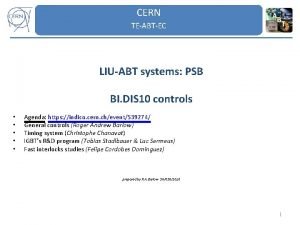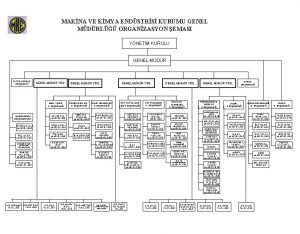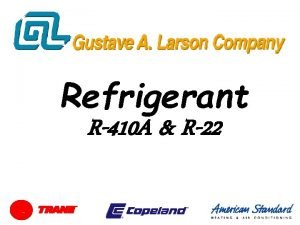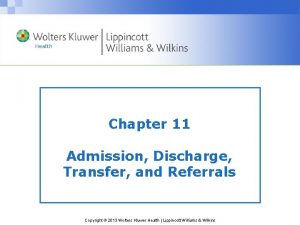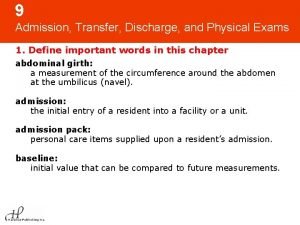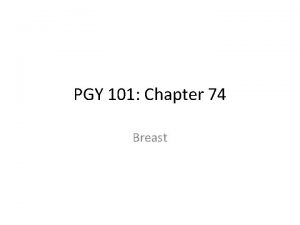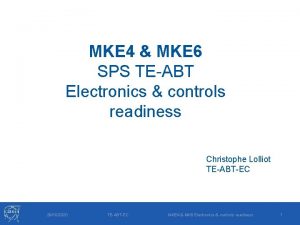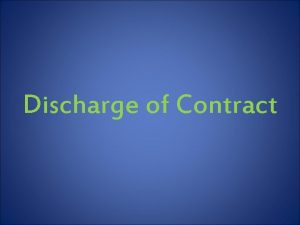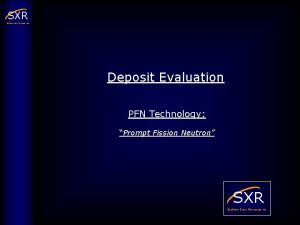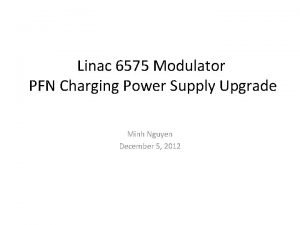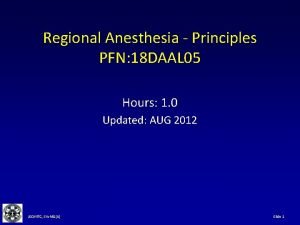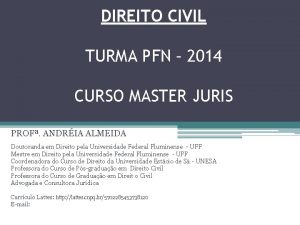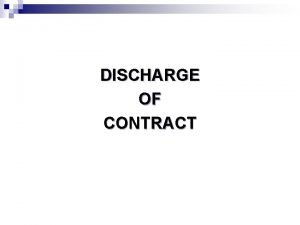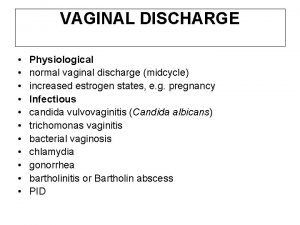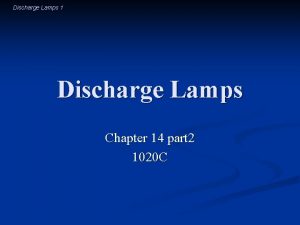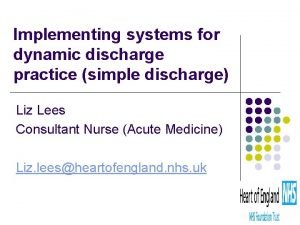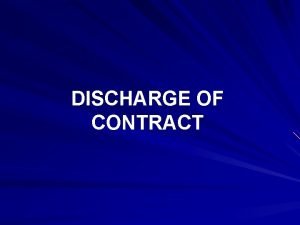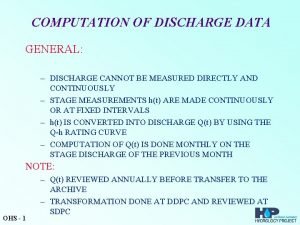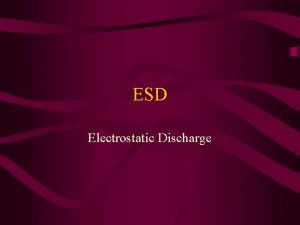Needs for MKE PFN discharge issues and options




















- Slides: 20

Needs for MKE PFN discharge: issues and options Etienne Carlier & Thomas Kramer ABTEF 24 -10 -2017

MKE(4) Architecture SLOW TRIGGER (-15 ms) FAST TRIGGER (-50µs)

BETS INHIBIT FAST TRIGGER SLOW TRIGGER FAST & SLOW TRIGGERS Extraction BIS INHIBIT MKE(4) – Machine Protection SLOW TRIGGER inhibited only by BIS FAST TRIGGERS inhibited by BIS and BETS

Issue How to avoid to go into a deadlock situation?

Normal Cycle - SLOW - Initial condition OK - Vs = 0 k. V - First BIS window OK - RCPS triggered (SLOW TRIGGER) - PFN charged

Normal Cycle - FAST - Second BIS window OK - BETS window OK (Vs = 27. 790 k. V) - MAIN switch triggered (FAST TRIGGER) - PFN discharged

Normal Cycle - FAST - BIS and BETS window OK - Fast pulses - MAIN switch, Short-circuit and TDR - Kick synchronization with beam

Bad cycle - Missing second BIS window (SLOW) - Initial condition OK (Vs = 0 k. V) - First BIS window OK. - RCPS triggered (SLOW TRIGGER) - PFN charged

Bad cycle - Missing second BIS window (FAST) - Second BIS window NOT OK (machine protection) - BETS window OK (Vs = 27. 790 k. V) - FAST TRIGGER inhibited by BIS - Slow PFN discharge

Bad Cycle – Missing BETS window (SLOW) - Next cycle after missing second BIS window event - Initial condition NOT OK. Vs = ~2 k. V instead of 0 k. V (slow discharge) - First BIS window OK - RCPS triggered (SLOW TRIGGER)

Bad Cycle – Missing BETS window (FAST) - Next cycle after missing second BIS window event - Second BIS windows OK (machine protection) - BETS window NOT OK. Vs = 27. 0 k. V instead of 27. 8 k. V (+1. 5% tolerance) - FAST trigger inhibit by BETS. - Slow PFN discharge

Options How to come out of a deadlock?

Do nothing, just wait… • System put in FAULT after three consecutive occurrences of FAST TRIGGER inhibition • Once in FAULT slow discharge of the PFN through the internal circuit impedance (HV divider) • PROS • Clear indication of the source of the failure • CONS • Put system in FAULT • Action required from CCC to restart the system • Downtime (detection + action + reaction)

Decrease circuit impedance • Add bleeding resistor in parallel with PFN • Today discharge rate is ~93% in 15 sec (3 RC not reached) • 100% in ~4. 8 sec to be achieved if we want to be fully PPM (worst case) • PROS • Keep the installation ON • Simple and passive • CONS • Impact on kick strength stability to be checked (variable RCPS length on LHC cycles induced by re-phasing)

Add a DUMP switch • Replacement of the diode with a DUMP switch in order to control the PFN discharge through the TDR • PROS • Keep the installation ON • Clean PFN discharge mechanism (as implemented for others systems) • CONS • Increase operational voltage (if magnets have to be terminated too) • No protection against MAIN switch erratic

Add CLIPPER switch • Discharge of PFN though a “controlled” short circuit (Thyratron) • Fast reaction (a few hundred of ns) • PROS • Keep the installation ON • Can protect the system against MAIN switch erratic • CONS • Another source of erratic • Can affect the beam in case of erratic during MAIN conduction (reflection between magnet short-circuit and clipper switch in conduction) • Not designed for repetitive use

Add a crowbar circuit • Slow controlled PFN discharged mechanism through a solid state switch crowbar (and a low resistance path). • Reaction time in the range of a few hundred of ms (discharge current limitation). • PROS • Keep the installation ON • Not a source of erratic • Designed for repetitive use • CONS • No protection against MAIN erratic • Additional interlocking logic needed to avoid doing a resonant charging while the crowbar is in conduction

Inhibit • Inhibit RCPS SLOW trigger if PFN voltage not equal to 0 V • PROS • Keep the installation ON • Low-level • CONS • More than one cycle lost (two? )

Others • Mechanical discharge switch (ross relay + discharge resistor) • Can we use the PFN electrical discharge switch for this? • Pulse the system in the BEAM_OUT • … • Machine protection consideration…

Summary • System reacts to machine protection interlock (BIS and BETS) as expected • System falls in a deadlock situation as expected • Current deadlock exit strategy works as expected But • Current approach is annoying for operation once BIS inhibitions start to occur too frequently • Different options to solved or improve the situation identified • PRO and CONS of each option to be analyzed more into details in order to find the best strategy • Final solution is probably a combination of more than one single option
 Pfn
Pfn Pfn
Pfn Maneno ya hekima
Maneno ya hekima Mke organizasyon şeması
Mke organizasyon şeması Primary needs and secondary needs
Primary needs and secondary needs Primary needs and secondary needs
Primary needs and secondary needs Henry murray theory
Henry murray theory Strategic gender needs and practical gender needs
Strategic gender needs and practical gender needs Types of needs in esp
Types of needs in esp 410a refrigerant pressure chart
410a refrigerant pressure chart Egress diagonal rule
Egress diagonal rule Exit exit access and exit discharge
Exit exit access and exit discharge Chapter 11 admission transfer and discharge
Chapter 11 admission transfer and discharge Admission transfer and discharge
Admission transfer and discharge Emergency admission process
Emergency admission process Chapter 9 admission transfer discharge and physical exams
Chapter 9 admission transfer discharge and physical exams Admission transfer discharge and physical exams
Admission transfer discharge and physical exams Cryoablation fibroadenoma
Cryoablation fibroadenoma Fspos
Fspos Typiska novell drag
Typiska novell drag Nationell inriktning för artificiell intelligens
Nationell inriktning för artificiell intelligens

